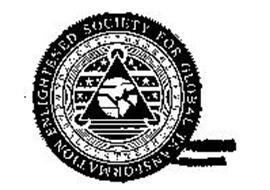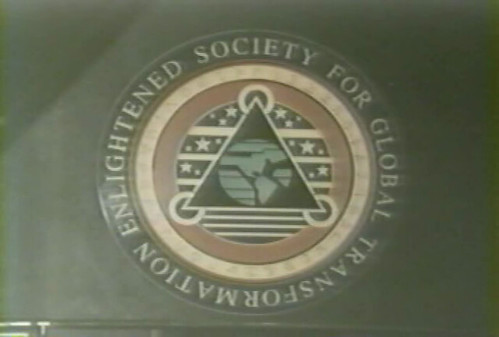Fear and Desire is a 1953 American anti-war film directed, produced, and edited by Stanley Kubrick, and written by Howard Sackler. With a production team of fifteen people, the film was Kubrick's feature directorial debut.
Release date:
March 31, 1953 (NYC)
April 1, 1953 (U.S.)
Plot
Fear and Desire opens with an off-screen narration by actor David Allen who tells the audience:
There is a war in this forest. Not a war that has been fought, nor one that will be, but any war. And the enemies who struggle here do not exist unless we call them into being. This forest then, and all that happens now is outside history. Only the unchanging shapes of fear and doubt and death are from our world. These soldiers that you see keep our language and our time, but have no other country but the mind.
The story is set during a war between two unidentified countries. An airplane carrying four soldiers from one country has crashed six miles behind enemy lines. The soldiers come upon a river and build a raft, hoping they can use the waterway to reach their battalion. As they are building their raft, they are approached by a young peasant girl who does not speak their language. The soldiers apprehend the girl and bind her to a tree with their belts. The youngest of them is left behind to guard the girl. He starts to talk to her, but as she doesn't understand him he talks always more as a delirium and when he unbelts her believing she will embrace him, she tries to escape and the young soldier shoots her dead. Mac, another soldier of the four, persuades the commander to let him take the raft for a solo voyage in connection with a plan to kill an enemy general at a nearby base. The remaining two soldiers successfully infiltrate the base, and the enemy general is killed. They talk and eat with their own general and return to the river to await Mac. Sitting there they philosophize about war and how no man is made for it.
Production
Due to budget limitations, Kubrick improvised in the use of his equipment. To create fog, Kubrick used a crop sprayer, but the cast and crew was nearly asphyxiated because the machinery still contained the insecticide used for its agricultural work.
Distribution, disappearance and restoration
Kubrick's next planned feature, Killer's Kiss (1954), would be co-written by Kubrick and Howard Sackler and star Frank Silvera, one of the Fear and Desire actors.
In the years following its release, Fear and Desire seemed to have disappeared. Distributor Joseph Burstyn died in November 1953 on a trans-Atlantic flight, and his company went out of business. There were stories that Kubrick had spent years acquiring all known prints of the film, with the plan of preventing it from ever being seen again. However, some prints of the film remained in private collections.
Fear and Desire had its first retrospective screening at the 1993 Telluride Film Festival. In January 1994, the Film Forum, a nonprofit art and revival theater in lower Manhattan, announced plans to show Fear and Desire on a double bill with Killer's Kiss. Although the film’s copyright lapsed and the property was in the public domain, thus allowing it to be shown without fear of legal actions, Kubrick tried to discourage it from gaining an audience. Through Warner Brothers, Kubrick issued a statement that severely downplayed the film’s value, and he called Fear and Desire "a bumbling amateur film exercise."
---
Stanley Kubrick's first British productions were two films with Peter Sellers, Lolita (1962) and Dr. Strangelove (1964).
Early life
Kubrick was born in the Lying-In Hospital at 307 Second Avenue in Manhattan, New York City, to a Jewish family. He was the first of two children of Jacob Leonard Kubrick (May 21, 1902 – October 19, 1985), known as Jack or Jacques, and his wife Sadie Gertrude Kubrick (October 28, 1903 – April 23, 1985), known as Gert. Kubrick's great-grandfather, Hersh Kubrick, arrived at Ellis Island via Liverpool by ship on December 27, 1899, at the age of 47, leaving behind his wife and two grown children, one of whom was Stanley's grandfather Elias, to start a new life with a younger woman.
Kubrick, who later became a member of the United States Chess Federation, explained that chess helped him develop "patience and discipline" in making decisions.
In 1946, he became an apprentice photographer for Look. G. Warren Schloat, Jr., another new photographer for the magazine at the time, recalled that he thought Kubrick lacked the personality to make it as a director in Hollywood, remarking, "Stanley was a quiet fellow. He didn't say much. He was thin, skinny, and kind of poor—like we all were". Kubrick quickly became known, however, for his story-telling in photographs. His first, published on April 16, 1946, was entitled "A Short Story from a Movie Balcony" and staged a fracas between a man and a woman, during which the man is slapped in the face, caught genuinely by surprise.
Paths of Glory, set during World War I, is based on Humphrey Cobb's 1935 antiwar novel, which Kubrick had read while waiting in his father's office. Schary of MGM was familiar with the novel, but stated that the company would not finance another war picture, given their backing of the anti-war film The Red Badge of Courage (1951). After Schary was fired by MGM in a major shake-up, Kubrick and Harris managed to interest Kirk Douglas in playing Colonel Dax. The film, shot in Munich, from January 1957, follows a French army unit ordered on an impossible mission, and follows with a war trial of Colonel Dax and his men for misconduct. For the battle scene, Kubrick meticulously lined up six cameras one after the other along the boundary of no-man's land, with each camera capturing a specific field and numbered, and gave each of the hundreds of extras a number for the zone in which they would die. Kubrick himself operated an Arriflex camera for the battle, zooming in on Douglas. Paths of Glory became Kubrick's first significant commercial success, and established him as an up-and-coming young filmmaker. Critics praised the film's unsentimental, spare, and unvarnished combat scenes and its raw, black-and-white cinematography. Bosley Crowther of The New York Times wrote: "The close, hard eye of Mr Kubrick's sullen camera bores directly into the minds of scheming men and into the hearts of patient, frightened soldiers who have to accept orders to die". Despite the praise, the Christmas release date was criticized, and the subject was a controversial one in Europe. The film was banned in France until 1974 for its "unflattering" depiction of the French military, and was censored by the Swiss Army until 1970.
Kubrick's next project was Dr. Strangelove or: How I Learned to Stop Worrying and Love the Bomb (1964), another satirical black comedy. Kubrick became preoccupied with the issue of nuclear war as the Cold War unfolded in the 1950s, and even considered moving to Australia because he feared that New York City might be a likely target for the Russians. He studied over 40 military and political research books on the subject and eventually reached the conclusion that "nobody really knew anything and the whole situation was absurd". After buying the rights to the novel Red Alert, Kubrick collaborated with its author, Peter George, on the script. It was originally written as a serious political thriller, but Kubrick decided that a "serious treatment" of the subject would not be believable, and thought that some of its most salient points would be fodder for comedy. Kubrick and George then reworked the script as a satire (provisionally titled "The Delicate Balance of Terror") in which the plot of Red Alert was situated as a film-within-a-film made by an alien intelligence, but this idea was also abandoned, and Kubrick decided to make the film as "an outrageous black comedy". Just before filming began, Kubrick hired noted journalist and satirical author Terry Southern to transform the script into its final form, a black-comedy, loaded with sexual innuendo, becoming a film which showed Kubrick's talents as "unique kind of absurdist" according to the film scholar Abrams.
With the vision in mind to shoot what would become Full Metal Jacket (1987), Kubrick began working with both Herr and Hasford separately on a script. He eventually found Hasford's novel to be "brutally honest" and decided to shoot a film which closely follows the novel. All of the film was shot at a cost of $17 million within a 30-mile radius of his house between August 1985 and September 1986, later than scheduled as Kubrick shut down production for five months following a near-fatal accident with a jeep involving Lee Ermey.
Other projects
Tony Frewin, an assistant who worked with the director for a long period of time, revealed in a March 2013 Atlantic article: "He [Kubrick] was limitlessly interested in anything to do with Nazis and desperately wanted to make a film on the subject." Kubrick had intended making a film about the life story of Dietrich Schulz-Koehn, a Nazi officer who used the pen name "Dr. Jazz" to write reviews of German music scenes during the Nazi era. Kubrick had been given a copy of the Mike Zwerin book Swing Under the Nazis after he had finished production on Full Metal Jacket, the front cover of which featured a photograph of Schulz-Koehn. A screenplay was never completed and Kubrick's film adaptation plan was never initiated. The unfinished Aryan Papers, based on Louis Begley's debut novel Wartimes Lies, was a factor in the abandonment of the project. Work on Aryan Papers depressed Kubrick enormously, and he eventually decided that Steven Spielberg's Schindler's List (1993) covered much of the same material.




